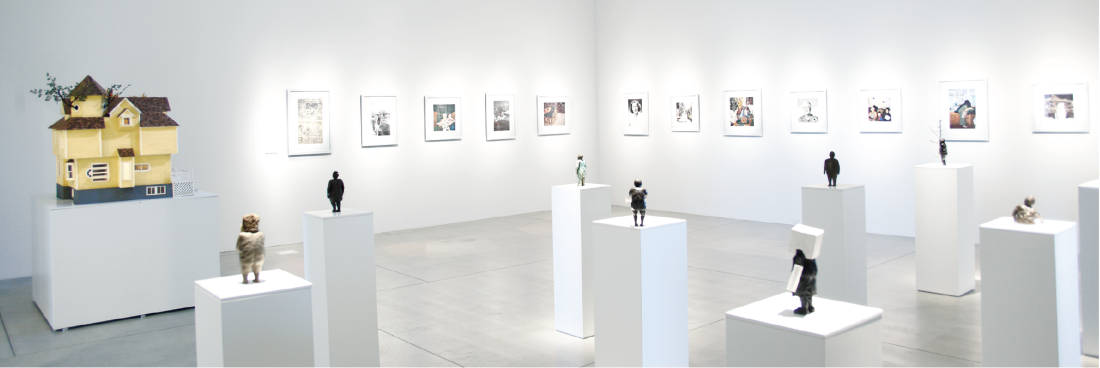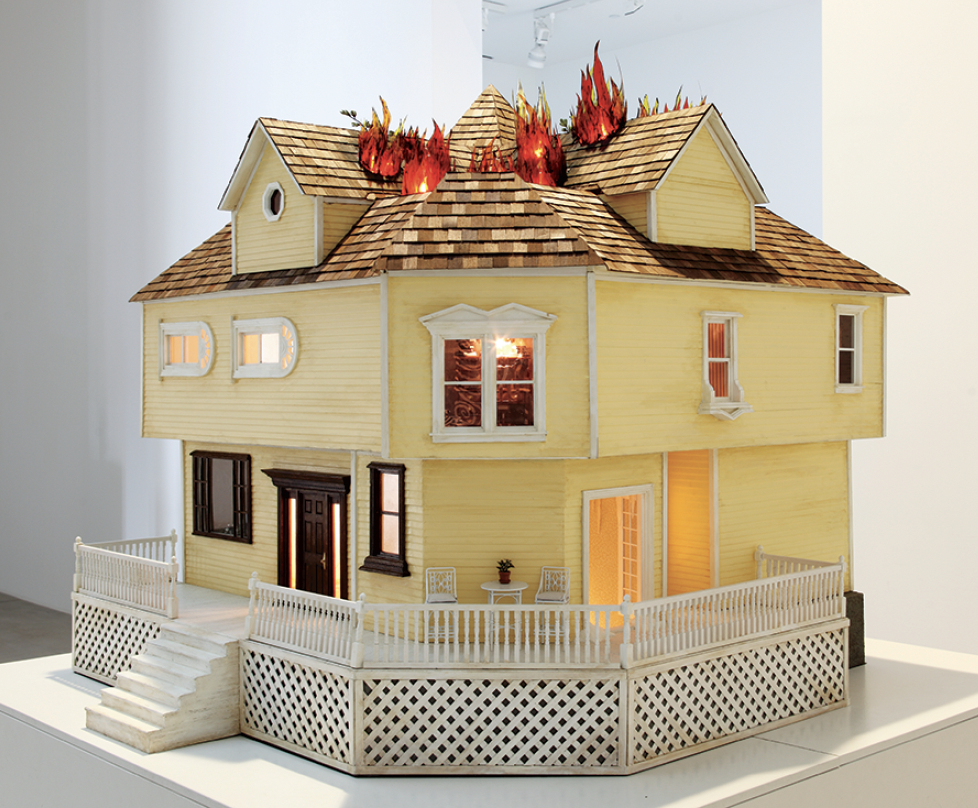Sarah Anne Johnson
There’s a recurring motif in Charlie Kaufman’s film Synecdoche, New York of a house that is perpetually on fire. The protagonist Caden Cotard’s long suffering love interest Hazel (played by Samantha Morton) purchases it early on in the film after a short exchange with her real estate agent where she admits she is anxious about the fire. “I’m really concerned about dying in the fire,” Hazel says. To comfort her and close the sale, the agent replies sympathetically, “It’s a big decision how one prefers to die.”
Unfortunately for most of us, we never get to choose how we die. It’s only in retrospect that we can identify the small, random sparks that ignite a seemingly insignificant chain of events that lead to our eventual consumption. The source is sometimes never found, and the embers can burn, even flare up again, long after the fated soul has been laid to rest. And, to stretch a metaphor even further, like Hazel’s slowly smoldering house, a fire can take a lifetime to finish its work.
The fire that consumed Winnipeg artist Sarah Anne Johnson’s family was set before she was even born, when her grandmother, suffering from postpartum depression and unable to find the help she needed in Winnipeg, ended up at the Allan Memorial Institute in Montreal and in the care of Dr. Ewen Cameron. Her sessions as his patient coincided with a period where his research, funded in part by the CIA, was focused on radical attempts at brainwashing (which is an innocuous phrase for what is essentially the forced obliteration of an individual’s identity).

Installation view of Sarah Anne Johnson’s exhibition “House on Fire,” 2009. Collection of the Art Gallery of Ontario. Purchased with the assistance of Michael F B Nesbitt, 2009. © 2009, Sarah Anne Johnson. Courtesy the Art Gallery of Ontario.
Subject to a sadistic array of “treatments,” Johnson’s Nan somehow survived with most of her mind intact and returned to her family, only to discover years later in a New York Times exposé the secret nature of the torture that she had suffered. She lead a class action suit against the CIA, who eventually settled out of court and never publicly apologized for the harm they had facilitated on her and dozens of unidentified others. [A detailed interview with the artist discussing this history can be found in Border Crossings #107.]
Johnson grew up weathering the effects of this sinister page in Canadian medical history. The awareness that doctors and government agencies can abuse those who are entrusted to their care to such a degree is enough to cause a crisis in ethical and political faith. To have one’s own family treated so must have been devastating. Perhaps in response, Johnson started her artistic career with idealistic portraits of temporary communities tied to nature, such as Canadian tree planters and environmentalists in the Galapagos. She decided to begin making work about her grandmother only after she felt artistically mature and emotionally capable enough to deal with something so close to home.
The central piece in her exhibition “House on Fire”—shown this summer and recently purchased in whole by the Art Gallery of Ontario—is a dollhouse. Flames lick the roof, a tree grows through it, and within each window is a dreamlike scene of disorder and neuroses. Snow has flooded one sitting room, stairs crowd another at odd angles. A waiting room floor has become marshland and an office is covered with psychedelic circles. There are restraining straps on a woman’s bed and, through an upper window, a couple dancing in a cave of ice: the man looks like a doctor, the woman is naked and has a bag on her head.
One of the most terrifying aspects of Dr. Cameron’s practice was the isolation he enforced on his patients through seclusion and masking. His method of destroying someone also protected him from being questioned, and the final tragedy of his crimes is that he died before he could be held accountable. Johnson symbolically removes the box that encased her grandmother’s head and, with her dollhouse, attempts to map out and make sense of the damage within, if only to assert something of a sense of home and self alongside the chaos and confusion.

Sarah Anne Johnson, House on Fire, 2009, mixed media, 36 x 36 x 48”. Collection of the Art Gallery of Ontario. Purchased with the assistance of Michael F B Nesbitt, 2009. © 2009, Sarah Anne Johnson. Courtesy the Art Gallery of Ontario.
The various psychoses, real or imagined, that demonized her grandmother are represented in a series of bronze figurines. They are the size of dolls, but reminiscent of something older than childhood, something that might be found in a museum. The various torments could be mythological, and from an ancient culture, but they aren’t: they include an inverted face, a tree branch emerging from, or entering into, her mouth, an exploding head.
On their own, these sculptures evoke the work of artists who deal with similar internal conflicts (Kiki Smith and Louise Bourgeois come to mind). It is only in combination with the accompanying photographs that Johnson identifies the recent, personal history that can’t be separated from her project. They are family photos for the most part, but she has drawn and painted over them, invading their innocent space with decorative chains or lysergic patterns, blending the body of her grandmother into root systems or dissolving her in clouds of smoke and atomic particles. Newspapers reporting on the case against the CIA are also included and a daisy chain of Dr. Cameron-heads snakes through one.
To judge this work as one would any exhibition is unfair because this is a life we’re looking at and, as such, of different value than simply aesthetic. This is a story of a real family. It is an episode in history that should never have happened and must never be forgotten. Like Caden Cotard’s all-encompassing theatre project in Synecdoche, New York, this work blurs life and art in a way that is forever unresolved. The sense you get is that Johnson is trying to make understandable an event that is forever out of her grasp, trying to reclaim someone from the past and recreate the person who was taken away from her grandmother and thus taken away from her. It is an acknowledgement of the damage done and an attempt to, if not extinguish, then insulate against the flame. ❚
“Sarah Anne Johnson: House on Fire” was exhibited at the Art Gallery of Ontario from July 4 to August 23, 2009.
Terence Dick is a writer who lives in Toronto. He is the Toronto correspondent and editor for www.akimbo.ca.

